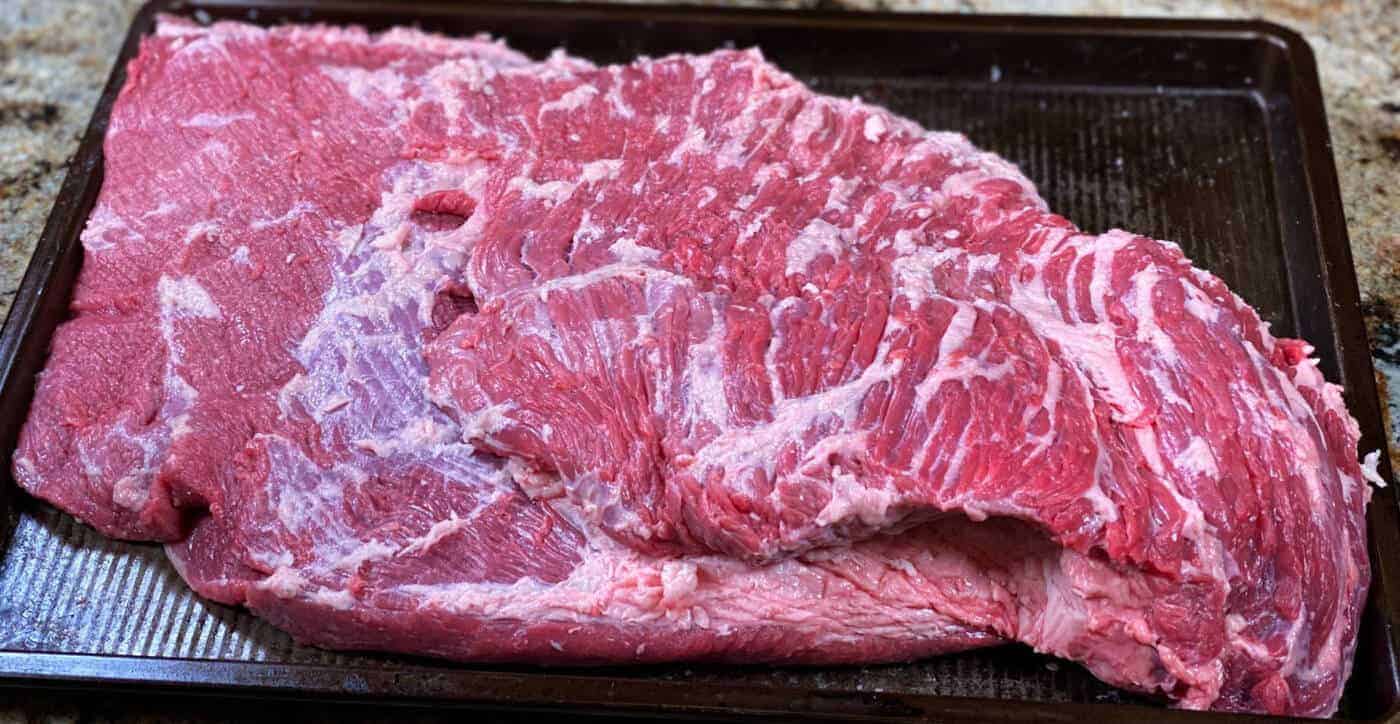They do not and cannot.
With the dry rub the salt and cure #1 stand alone and are 100% of themselves. When applied to a meat piece they act directly to the meat through diffusion (it all goes into the meat) and we know how much salt and cure is in the meat piece at 14 days.
With a cover only brine, the salt and cure #1 are mixed with water and are not stand alone but are now a percentage of the water weight. The salt and cure, in solution, that is touching the meat surface only are able to diffuse into the meat, not the salt and cure that are suspended away from the meat surface in the rest of the brine. This salt cannot effect the meat until it is able to physically touch the meat surface. So now we have to guess what the actual uptake into the meat will be and how long it will take, which will be much longer than dry rubbed. There is no scale no equations to calculate this uptake. USDA says no more than 10% of the meat weight in brine, Stanley Marianski says in reality the water uptake is closer to 4%. That’s a pretty wide margin, but it still does not address how much salt and nitrite will diffuse into the meat. Could be 4%, could be 10%, I’ve read lab results that suggest upwards of 18% salt and nitrite Uptake. It’s all over the map, does it work, yes, are some happy with that process, yes, but none of us know what or how much of the brine ingredients diffused into the meat. Was it enough? Maybe so, but how much was it exactly? With out lab tests none of us can know. I hardly call that “equilibrium “ more like a lucky guess. There are so many things that can and do influence the uptake of brine to meat. Fat layers and thickness of fat, sodium moves very slow through fat, skin in the case of pork again sodium moves even slower through skin, moisture content of the meat, freshness of the meat, muscle fiber make up, weather the meat has been frozen or not, the variables go on but they all make a difference. Lab results show that a clean and trimmed loin muscle will uptake more salt and nitrite than a belly piece. So it’s variable and not equilibrium with a cover only brine.
This is why I much prefer dry rubs or brine injection. In this way I can inject or rub on exactly the salt and nitrite that I want in a finished product. In this way I can obtain true equilibrium that is 100% repeatable and I know pretty much exactly what’s in my meat, and that beats a guess any day.







